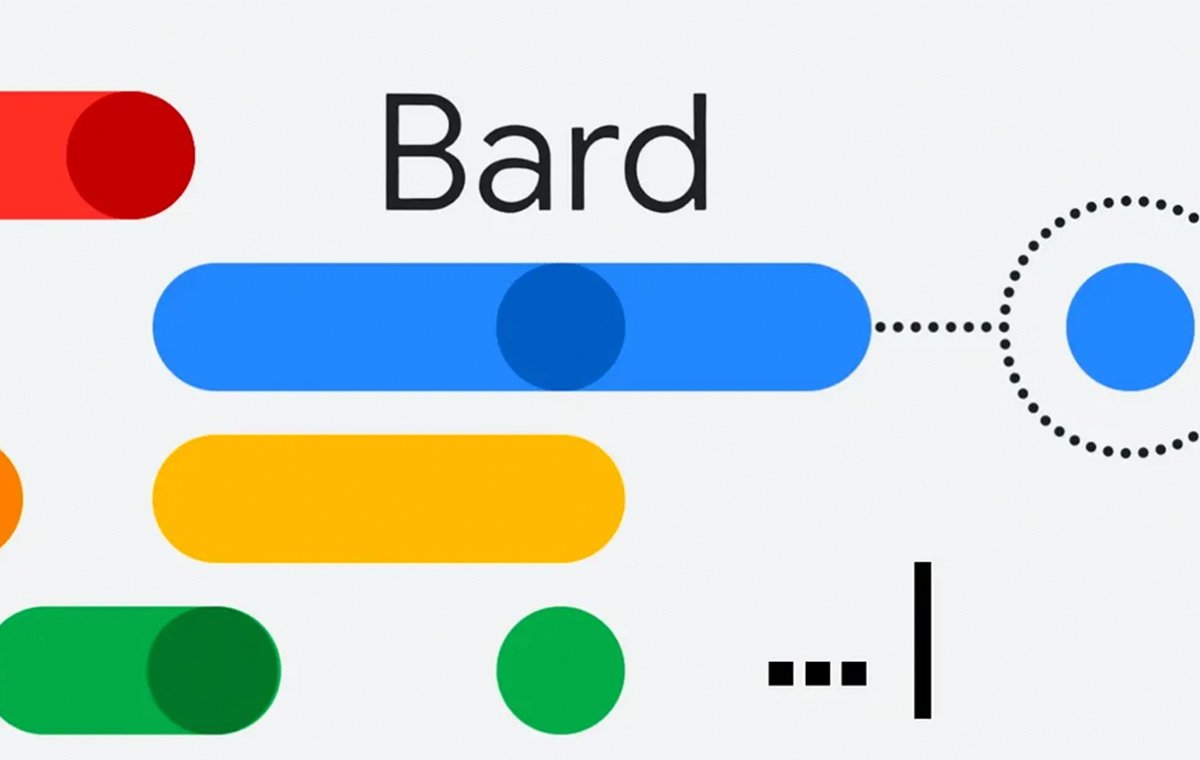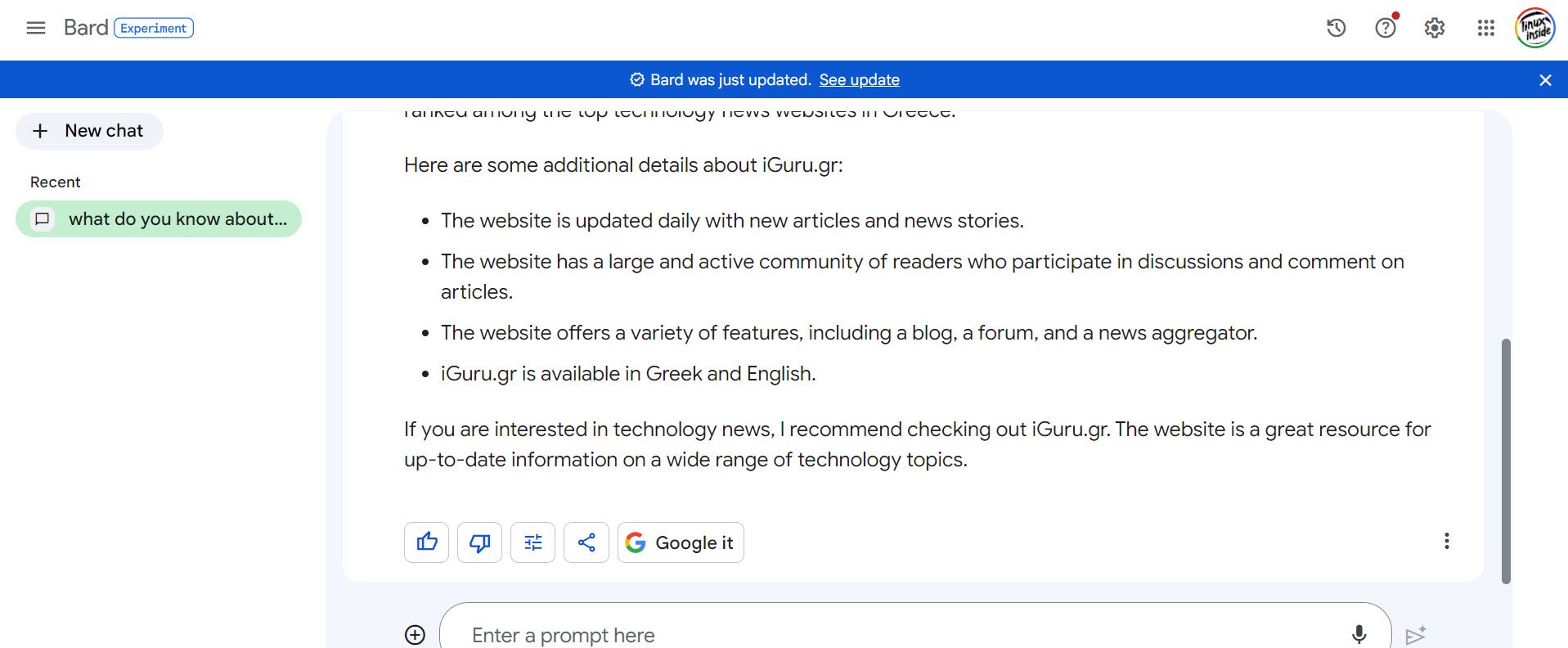When last February Google introduced Bard to the world, the tool or “experiment” as he calls it that allows the user to interact with productive artificial intelligence, the whole planet was alive to the beat of ChatGPT and its integration into Bing, the search engine of Microsoft.

But having overcome the weaknesses presented in the trial stage, Bard became available in March to the general public in the US and UK, and gradually by May in 180 countries—in addition to English, users could interact with it in Japanese and Korean.
As of this morning, Bard is also available in Greece, the rest of the European countries and also in Brazil. It can also be "communicated" in 40 languages, including Greek. Greek users can enter the bard.google.com from a computer or mobile, sign in with their Google Account and start interacting with Bard.

At the online briefing held to unveil what it described as Bard's biggest expansion to date, chief developer Jackie Krafcik described Google's "experiment" as "a form of artificial intelligence that we call augmented imagination. It takes the world's most powerful and beautiful computer, the human brain, and builds on our ability to create. And the way we create is by using our imagination." He emphasized that it is not a chatbot, but "a tool that helps us find words and ways to express ourselves, to tell our stories, it is our Bard", making a direct reference to the Celtic troubadours that inspired his name .
Among Bard's key features is the ability to provide multiple responses (the user can select the one they prefer in the responses in the top right corner of View Other Drafts and from there continue with Bard and enter their next queries. Also, Although Bard is a completely separate experience from Google Search, one can use Search to find more information or resources from the Internet.While using Bard, they can tap Google It and find suggestions for related questions. . Also, since Bard is in an early stage of experimentation, Google will continue to make improvements based on user feedback. To submit a comment, one can select one of the thumbs down or thumbs up buttons and record the positive or negative experience of it.
On the occasion of Bard's expansion, Google proceeded to add new functions and features.
Users can now receive responses more tailored to their needs by: being able to listen to Bard's responses: Users simply type a message and select the sound icon to hear Bard's responses. This n mode is now available in more than 40 languages, while soon it will also be available in Greek.
They can easily customize responses: The tone and style of Bard's responses can be changed to five different options; simple, long, short, professional or informal.
They'll also be able to pin, organize, and modify conversations (when they start a conversation, they'll see options to pin, rename, and download recent conversations in the sidebar). They will be able to export Python code to Replit, in addition to Google Colab (available evidence shows that Bard is popular for programming work). Finally, users are given the possibility to share the answers they receive through shared links and the use of images as soon the possibilities of Google Lens on Bard – right now if someone needs more information on an image or inspiration for a caption and note on an image, they can upload images with instructions and Bard will analyze them to help (this feature is for currently only available in English).
Last May Bard had more than 140 million visits worldwide – double the nearly 50 million it had in April. Google's goal is for Bard to reach 1 billion. users.






I like it very much.